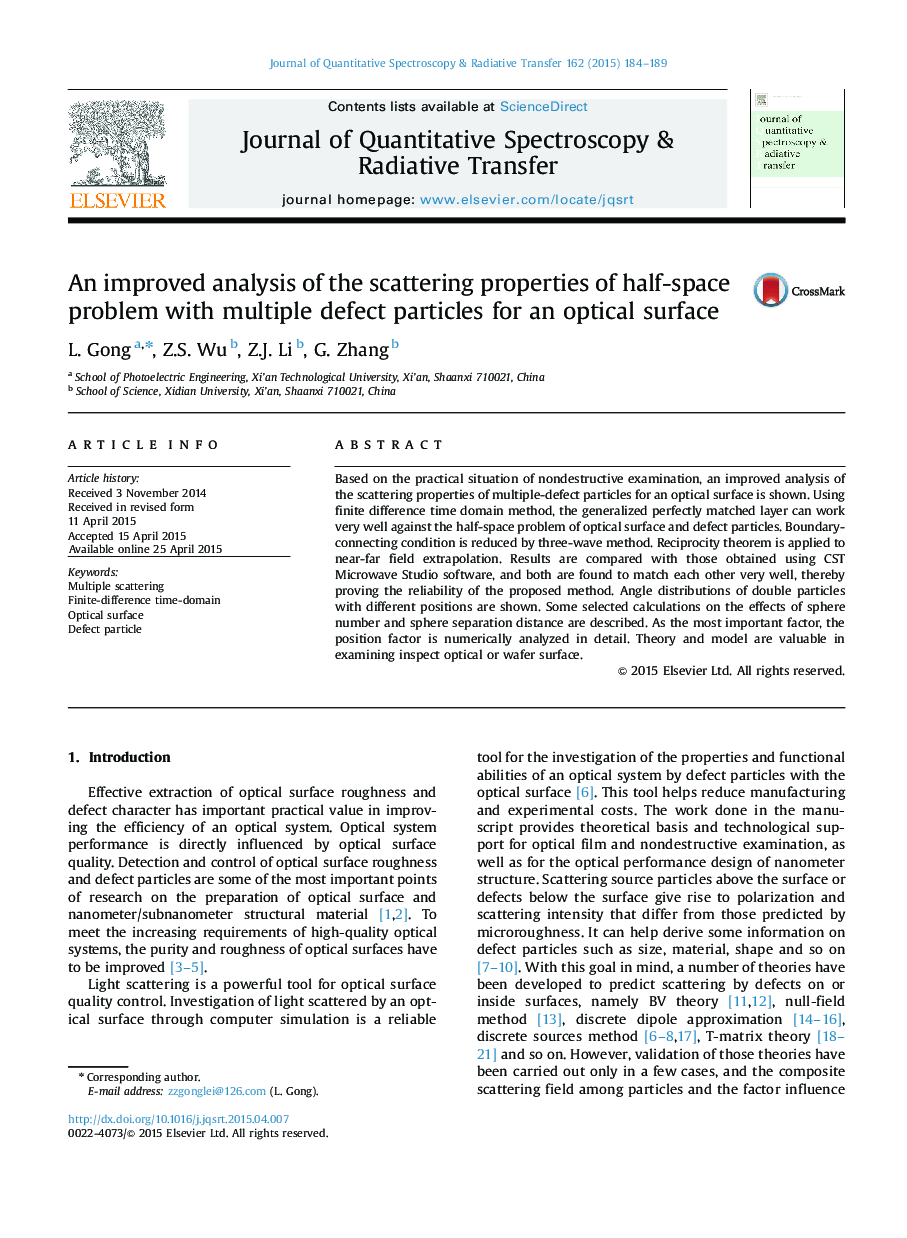| Article ID | Journal | Published Year | Pages | File Type |
|---|---|---|---|---|
| 5427911 | Journal of Quantitative Spectroscopy and Radiative Transfer | 2015 | 6 Pages |
â¢Scattering properties with multiple defect particles is numerically investigated.â¢Finite Difference Time Domain method with GPML is presented.â¢Connect boundary condition is reduced by three waves method.â¢Reciprocity theorem is applied to near-far field extrapolation.â¢Numerical results of several typical particles and optical surface are presented.
Based on the practical situation of nondestructive examination, an improved analysis of the scattering properties of multiple-defect particles for an optical surface is shown. Using finite difference time domain method, the generalized perfectly matched layer can work very well against the half-space problem of optical surface and defect particles. Boundary-connecting condition is reduced by three-wave method. Reciprocity theorem is applied to near-far field extrapolation. Results are compared with those obtained using CST Microwave Studio software, and both are found to match each other very well, thereby proving the reliability of the proposed method. Angle distributions of double particles with different positions are shown. Some selected calculations on the effects of sphere number and sphere separation distance are described. As the most important factor, the position factor is numerically analyzed in detail. Theory and model are valuable in examining inspect optical or wafer surface.
